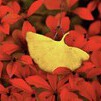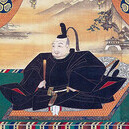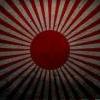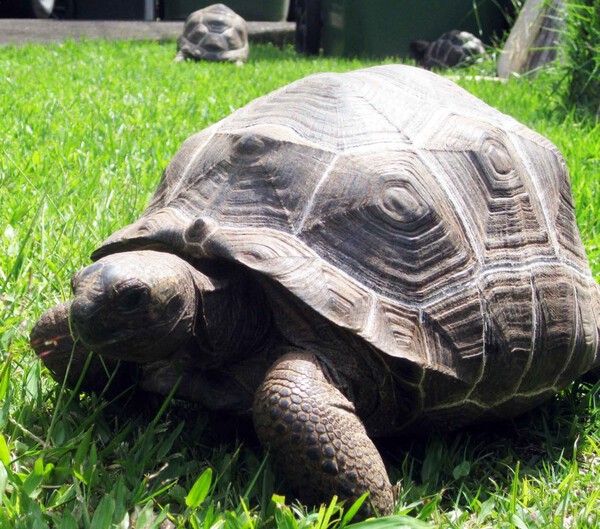Leaderboard
Popular Content
Showing content with the highest reputation on 03/25/2021 in all areas
-
5 points
-
I have examples of tsuba from the Inagawa School in Edo which I hope will be of interest to MNB readers. The first is signed Yoshitoshi and the second, a daisho pair, are signed Yoshimitsu. The tsuba were purchased in two separate lots, a year apart, from the same auction house and the boxes contained similar descriptions in Japanese, so I assume that they were being sold by the same Japanese dealer/collector. Having no previous knowledge of the artists or the school, I make no claims as to the authenticity of the signatures (appraisals welcome), but as neither was a master of the Inagawa school I guess they are more likely to be genuine. The first tsuba I’m posting from the Inagawa School in Edo is signed Yoshitoshi (良寿, though Bonhams read this as the alternative Nagatoshi, which sent me on a long fruitless search for the artist). It is a marugata (7.2 cm x 6.8 cm, thickness [rim]: 0.4 cm. Weight: 142g) shakudo nanako tsuba with a copper/silver rope fukurin. The front of the tsuba depicts a Chinese sage beneath a thatched roof trying to read by moonlight and the back shows a few plants, rocks and five geese. The design is a mixture of carving and iroe takazogan. The only criticism I have of the workmanship is that the leaves of the bamboo just seem to be scattered around the stems rather than growing from them. The tsuba came in a kiri box with a Japanese inscription on a strip of paper, as follows; 良寿. 木村氏. 木邑とも銘を切る. 稲川良克の門人で, のちに寿良に学ぶ. 木邑良寿(花押),江城東紅菓川辺木村良寿年十五歳而作之と銘する. 獅子や人物図の高彫と片切彫の作がある. 江戸住. 江戸時代後期 My poor Japanese and Google translates this as: ‘Yoshitoshi. Kimura family (This misled me for months as I thought it read Mr Kimura, and was the addressee of the note!). Also signed Kimura with the kanji (木邑). A student of Inagawa Yoshikatsu, who later learnt from Toshiyoshi (can also be read as Juryo or Toshinaga). The Kimura Yoshitoshi (signature) was used for 15 years to mark his stay in Edo Higashi Kanagawa Ichigi village (?). There are works in high relief (katabori) and also those cut out in the round (katakiribori) such as lions. He was an Edo resident. He lived in the late Edo period.’ Corrections to my translation welcome. According to Markus Sesko (Genealogy Charts p 45) Yoshitoshi, a member of the Kimura family, worked in the Inagawa School in Edo and studied under Yoshikatsu, the third generation master and first member of the Kimura family to join the School. Yoshikatsu (1725-1779) was adopted by the second generation master, Naokatsu (1720-1763, who appears to have been only 5 years older than Yoshikatsu!). Seven other students of Yoshikatsu are listed, including the possible maker of my other Inagawa School tsuba: Yoshimitsu, posted separately below. No dates are given for any of the students but I deduce that they must have lived approximately 1750-1825. I have two possible candidates for the identity of the Chinese philosopher depicted on this tsuba, namely Che Yin (Sha’in) or Sun Kung, both from the Jin dynasty (265-420 CE). Che Yin used a bag of fireflies to provide light to study by, but as no fireflies are shown in this tsuba it’s probably not him. Sun Kung studied using moonlight reflected in the snow to provide light to read by. This tsuba shows only a thin new moon and no snow. Perhaps this is why the sage is looking despondent and is looking forward to the full moon in about 10 days’ time and perhaps some snow as well. I usually get the attributions to the mythology wrong, so I appreciate corrections from NMB scholars. Best regards (Just a guy making observations, asking questions, trying to learn)3 points
-
Are we having problems spelling Japanese today? 昭和刀 = Shōwa-tō = Showa- toh. Toh is just the old style of rendering ō. It is phonetic based and works out well. Still used by older Japanese, including my translator from long ago. Since Showa is a word used in the English language, the macrons are dropped, just like the spelling of Tokyo. This is because the average English speaker has no idea what a macron is nor how it is pronounced. The spelling of ō as oh solves this problem. Sometimes in life, one must think how things were done on a typewriter versus a word processor.3 points
-
Of course it's acid treated. That frosty look is a dead giveaway. Probably ferric chloride. Seems it's done everywhere there is an amateur polisher or bored owner.2 points
-
The second lot of Inagawa School shakudo tsuba are a daisho pair in maru gata form and each is engraved (kebori and katakiribori) with a ho-o bird (a mythical Japanese/Chinese phoenix) in a paulownia tree with clouds in the background. The ho-o and the paulownia leaves are finely engraved (kebori), but the clouds and branches are cut with a wide chisel (katakiribori). The engraving is without embellishment; except for a tiny (sub mm) spot of gold to pick out the eye of the ho-o. It appears that the bird depicted on the dai is a cock and the one the sho is a hen. The shakudo plate of the tsuba is flat, migaki-gi (polished) and both have a kogai hitsu ana that have been filled with a gold covered plug decorated with fine vertical file marks. The sho also has a kodzuka hitsu. Dai: Height: 7.6 cm, Width: 7.3 cm, Thickness (rim): 0.4 cm, Weight: 200 g Sho: Height: 7.3 cm, Width: 7.0 cm, Thickness (rim): 0.4 cm, Weight: 171 g Like my other Inagawa tsuba (Yoshitoshi, above) these tsuba came in a kiri box together with a slip of paper in Japanese providing information about the artist which read: 良光 青柳氏. 栄五郎と. 良英と兄弟. はじめ掘江興成に学び, 光成と名乗る. のちに良克の門人となる. 青柳良光(花押)と銘して. 獅子,竹菊,克図の縁頭ゃ小 柄がぁる 克 (Don’t think this is the right kanji) 江戸神田,数寄屋河岸住. (号)一楊堂 Once again, using my poor Japanese and Google, I translated this as (corrections welcome): Yoshimitsu. Family name: Aoyanagi. Called Eigoro. His brother was Yoshihide. First studied under Horie Okinari, called Mitsunari. (Note from Markus Sesko: who in turn was a student of Omori Teruhide, 1730-1798) Later, became a student of Yoshikatsu. Signed Aoya(na)gi Yoshimitsu (kao) Lions (shishi), bamboo and chrysanthemum, designs of fuchi-kashira are small ? He lived in Edo, Kanda district, by the river. His Go (art name) was Ichiyodo. (note: Markus Sesko says Ichimudo) According to Markus Sesko (The Japanese toso-kinko Schools) Yoshimitsu was a member of the Inagawa School in the Kanda district of Edo, founded by Naoshige (died 1739). He first studied under Horie Okinari, 1st generation master of the Horie School in Edo, born 1749. Yoshimitsu studied under the third generation master, Yoshikatsu (1725-1779) and was a member of the Aoyanagi family (Note: The samurai manor house of the Aoyagi/Aoyanagi family in Kakunodate, Akita is now a museum). It may be that Yoshimitsu was permitted to sign his work as he was a member of an important samurai family and so added his family name to the signature. The dates of Yoshimitsu or his contemporaries is not given in Sesko’s genealogy charts, but he was probably active around 1760-1820. Both tsuba are signed Aoyagi Yoshimitsu with a kao (Markus Sesko reads the signature as Aoyanagi Yoshimitsu). According to Japanese mythology the ho-o is a symbol of good luck and resides in paulownia trees. However, it said to only appear in times of peace, prosperity and, as it was a symbol of the Imperial house, some believed that it only appeared at the start of a new era. The leaves of the paulownia form the basis of the paulownia kamon (family crest) used by the Toyotomi clan and later by the Japanese Imperial family. I think that it is therefore possible that this daisho pair of tsuba was commissioned to coincide with the inauguration of a new Emperor and start of a new era. 1772 saw the start of the An’ei era (Emperor Hidehito), 1781 the start of the Tenmei era (Morohito) and 1818 the start of the the Bunsei era (Ayahito). There were also changes of the era in 1789 (Kansei), 1801 (Kyowa) and 1804 (Bunka) without a change in Emperor. Although there is no corroborative evidence, it seems probable that these tsuba were made to celebrate the assent of Emperor Morohito and the start of the Tenmei era in 1781, this being the date most likely to coincide with Yoshimitsu’s career. Best regards John (Just a guy making observations, asking questions, trying to learn)2 points
-
I have been summoned! Hey there Marc, super nice Kishu-zutsu there. I have a few locks and stocks but no barrel, so I'm desperately grifting for measurements and closeups anytime people are willing to share them. I'm planning on making these regularly as the main product for my business, but right now I'm in the stages of making my first "prototype". If you're up for it, any measurements you can provide of the sights, tenons, pan, basically ANYTHING attached to the barrel. Measurements of the barrel itself, such as the thinnest part on the swamp, how far up that is on the barrel, width at the muzzle and the very tail end, anything helps! No need to take apart the lock for me unless you have real hankering to, I'm pretty well set on that for now. I can tell it's already a true Kishu with the nut, and thankfully I have a couple of complete ones. Maybe someday when I'm not impoverished I can pick up a complete gun2 points
-
2 points
-
Obvious trash has some value as well as it provides entertainment. IMHO it's up to the people who animate the thread to set the balance between fun crap and insidious fakes. Members who find the thread too lowbrow can either skip it or provide worthier items for discussion.2 points
-
1 point
-
1 point
-
1 point
-
I’m not too surprised if it were acid treated, that would certainly explain some of those odd stains. To be honest the photos the vendor put were of low quality, I had assumed the reason it wasn’t photographed up close was because they weren’t good at that sort of thing... But after getting the blade IRL, it was obvious the state of polish was far worse than I expected or was told and that’s why there weren’t close up photos. Yes it has, and there is a chip (not a small one!) where I was explicitly told there were none. I used that reason to as for a return. Let me just say I’m happy I’m getting my money back. There were swords where I felt like gushing over how I got something nice at a very low price... this is not one of them, at all. Had it been as described it would have been worth it. Moral of the story, don’t chance it with stuff that won’t post close up photos of the hada and key sites. Oh well, I’d made it far enough without getting truly burnt so it’s only fair this happen to remind me of what can go wrong. Anyways, with a refund I should be okay, just wiser I hope.1 point
-
1 point
-
Thanks guys. I went back and re-read Nick's discussion. I mis-read the post. He said that the bullet-proof steel products also got this stamp. I've corrected my original post above.1 point
-
Dale, without a related scale, I would not have guessed your TSUBA to be that large! Then it was probably made that way! But with its pointed protrusions it is at least unusual, I think. The design looks like a mountain range to my eyes.1 point
-
Just saw this...have to agree. How much valuable hand-made tamahagane was being produced? ...enough to make say, 1,000,000 shovels as well as swords?. Seems strange. Just thinking out loud...1 point
-
Could it be that this polish is acid etched ? I think their is too much visible for the condition of the polish. This is just my opinion.1 point
-
The image is a scene instructing the casting of watermark tsuba as one of the vocational training in Japan. This is just technical guidance. Notice that the spout is set to the side of mimi instead of seppa-dai as in the past so that the molten metal works better with the mold. Obviously, the original shape of the tsuba is bad, and it belongs to the third category I classified. As soon as someone advises on the design, it is likely to be promoted to the first category. Another thing to note is that trainees often include foreigners of Asian descent. I'm not referring to this training center. https://twitter.com/Ryuichi13720000/status/13618877965672816681 point
-
I think the shape was deliberately made this way and not accidentally as a result of post-hardening. Also, Ara-Nie, of all things, are not a prime example of Saiha, and Saiha hardening does not start so far behind Ha-Machi as in this example. Basically, though, I can't rule out it being Saiha either, certainly not from the pictures. How to make blades look nice and old in later times, here is a nice example: http://www.kanshoan.com/english/swords/h41_kanetora.html1 point
-
I think that the images up by Dale about the replica of Kinko-tsuba and the images I have saved can be classified as follows. First, a product that repeats the original design. Secondly, the one that retains the original design, but gradually omits the details. Thirdly, It has been transformed from the beginning, and since the creator continues to make it without knowing the original design, it is a shape far from the original. The so-called "low-end" Kinko would be the second final form or the third. Of course, the first item need to be vigilant. Brilliantly decorated, they try to grab the contents of our wallet. Nonetheless, some buyers inadvertently pay highs for the second item, and those who choose the third item. It's fun to think about it, and imagine it. If you refer my post It may be stale and boring to other members, but I would appreciate it if you could leave it alone.1 point
-
Pietro. Thank you for your concern. You all . I'm neither a buyer's guide nor an open classroom to grow someone into a connoisseur. It's mostly just for fun and sharing with like-minded people. Otherwise I can't continue. Especially, except for exaggerated or inadequate explanations in online auctions, images are the only clue to the decision. Anyone can do it, because if you have access to it, all you have to do is observe it. We encourage you to discover the fishy product and present your point of view here or in a new thread. "Eureka!"1 point
-
If you are banging nihonto out for the war effort, a thin skin makes sense. You get a resilient blade that will bend rather than break, and who cares about multiple polishes down the line, there is a war on!1 point
-
There is a separate thread on the development of the IJA spade from Nick on Japanese Militaria. Being a nerd fan of Nick's I read it all the way through. They were made of modern "bulletproof" steel, with a pointed socket to stick in the ground, and a spy hole in the base of the blade...... Which is just so Japanese when you think of it.1 point
-
I thought about saiha, but there are two things that to me appear to be be conciencious add-on to sori: it has old styled fumbari, mostly happening next to nagako, and kissaki appears to have old ko-kissaki dimensions. Taken together I am inclined to believe it was purposefully made this way.1 point
-
1 point
-
...and I'd like to mention that Ray Singer's website, Swordsofjapan, contains a series of published articles by Jim Kurrasch that are very informative.1 point
-
I wager you are right. To be honest, I’m pretty poor at sizing up blades that are in a bad state of polish. Anyways the update is that the vendor was gracious enough to let me return it, so I guess I will continue speculating over this case but it’s only academic now. I think I’d best stick to swords in decent polish now since gambling with badly out of polish blades is more likely to end with me burnt than lucky. It’s totally possible that with a polish this could turn out to be a nice shinto/shinshinto homage to Kamakura blades, and the large nie just because it’s from satsuma or another tradition that does that, but it is just as likely that this could be a retemper, and I would rather spend my money sending my favorites for a polish than be disappointed by a saiha. True that if it’s one they didn’t do a terrible job since there isn’t nioigiri, but I like collecting blades in their original make. Like you said though, some smiths, like the ones who retempered the swords burnt at Osaka did an incredible job at restoring ruined national treasures, I imagine it must have been hard to reharden all those burnt old swords without losing some to hagiri.1 point
-
What a wonderful thread! Very informative and positive. NMB at its best! I just made a post to the Ethnographic weapons forum and got directed to Wikipedia! Thank you all! Peter1 point
-
1 point
-
Dale, couldn't it be that you TSUBA once also had that MIMI/ring? It does not look so balanced with its small diameter and the large NAKAGO-ANA. I could easily imagine your TSUBA having a ring.1 point
-
I think it's a step too far to say they made spades out of Tamahagane.. The spades were made out of bullet proof steel as they were used as part of field fortifications, which is very different.1 point
-
1 point
-
Is that so. As far as my posts are concerned, I haven't posted anything that will improve the knowledge of the members. Rather I am a nosey parker. "Hey! Check it out! Such a strange thing was on sale." From the image Dale showed, I felt a "future threat". Its manufacture clearly created a three-dimensional mold from a two-dimensional image of the museum. Small factories in Japan are in trouble because the number of jobs is drastically reduced. They want to make anything if it makes money. I can't imagine the detailed means, but I think it's only a matter of time before the introduction of a 3D printer.1 point
-
1 point
-
1. Type 98 IJA 2. Type 97 IJN 3. Type 97 IJN W/ custom saya 4. Civil sword possibly used in WWII 5. Rinji seishiki (Contingency model) IJA 6. Type 19 Army dress saber 7. Kyu gunto 2nd Photo L to R 8. Postwar Toyokawa/Army PX Souvenir 9. Possible Chinese fake; or low quality Type 98 10. Type 19 Navy dress saber1 point
-
Its a modern reproduction and in bad state.. So if you want a modern kabuto for display you can easily find beautifull modern Japanese kabuto in many websites they will be nice , in a very good state..1 point
-
This is one of the high5japan auctions on ebay. I think he has/had some gimei and expensive medium-low quality papered pieces.1 point
-
1 point
-
Dear Jason. I confess I am a sucker for handachi koshirae so I like these. The first blade seems to be signed Masanori, the pictures are nowhere near good enough to tell much about the blades though I like the extended kissaki. I assume that you can see more detail in the photographs you will be bidding from? These are coming out of Japan, (torokusho in the pictures), and they are without papers so if you are a collector of blades then warning bells are ringing. You will not likely be getting great blades. If you want swords then these are quite attractive but don't get carried away bidding, you will be buying un papered wakizashi . Let us know how it turns out. All the best.1 point
-
Jan, the photos do not allow to read the signature of the TSUBA correctly, but it may read ECHIZEN KINAI. If so, it could well be a genuine TSUBA which was silver coated in the recent past to match the other parts of the mounting. That may indeed be the work of an amateur as Brian suggested. Except for precious metals, all other metals usually were patinated. Silver can appear as bright metal if the design required it, e.g. to represent the moon. The lacquer work cannot be judged by photos, I am afraid. Modern SAYA usually have printed on decoration which looks very even in magnification. Traditional lacquerwork looks different. As Stephen suggested, a look into the KOI-GUCHI might reveal more (to an expert who can compare). I like the shape of the blade very much, so I hope for you that it is the real deal! I should say that the criticism vs. your KOSHIRAE is just a 'technical' or artistic one, and you should not feel bad about us pointing out weak features of it. This should not keep you from liking it, but as most of us, you will be in a learning process which will change your view the more you see and compare.1 point
-
1 point
-
1 point
-
1 point
-
I used Mike Virgadamo's services last year to have a shirasaya made for my murumachi period katana and was more than displeased with his services... Everything went smooth until I picked up the blade. Like an idiot I drove home without taking a really good look at the blade. It wasn't until I got home and inspected the blade again when I noticed not one but two chip marks on the blade, one on the yakiba and one on the mune. Before leaving my blade in his possession I had inspected, cleaned and taken pictures of it and saw no marks in these locations on the blade. When I brought this up to him he offered me $125 off the shirasaya and said that he didn't hear anything damage the blade and did not believe that it happened while in his possession despite his acknowledgement that there are tools in his shop that could cause this. I told him that I wanted all my money back which is more than fair and doesn't even cover the cost to fix the damage, considering a good polish is upwards of 3k. It wasn't until I threatened to sue him that he agreed to give my money back and still never admitted to doing anything wrong or even said sorry. I will say the shirasaya itself was of good quality... but at the expense of my blade definitely NOT worth it . Anyways sorry for the rant but I wanted to send out a message with a warning to always be vigilant and careful with who you trust your blades with because not everyone else will have that same care for what is yours. Unfortunately, I learned this the hard way and must be much more careful0 points
-
The real litmus test is how long "new guys" last in the pursuit. Nihonto is a tough gig from front to back and top to bottom!! BaZZa.0 points
-
Great thought, Bruce! Now that I look at it that seems like an obvious answer, but you're the only one to pick it up! It should be pretty easy to check too. @Elco68, are you able to see any signs the nut might be the wrong way around? Ideally, would you be able to safely undo the screw? With a little care nothing should get damaged. A well fitting screwdriver and a pair of pliers with soft leather over the teeth should do. If it is just on the wrong way, it would be better to put it back the right way anyhow! And probably being harder to remove. But hope Elco will test that... Edit: Made Bruce a meme...0 points
-
0 points








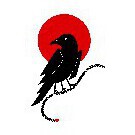





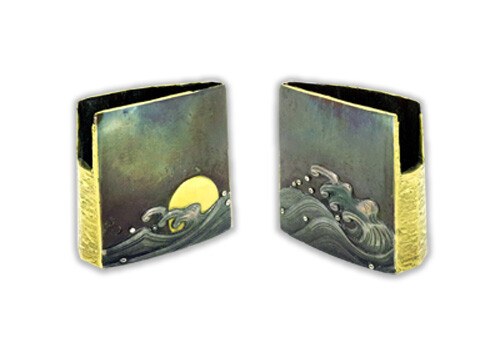


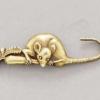


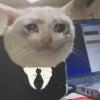
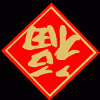



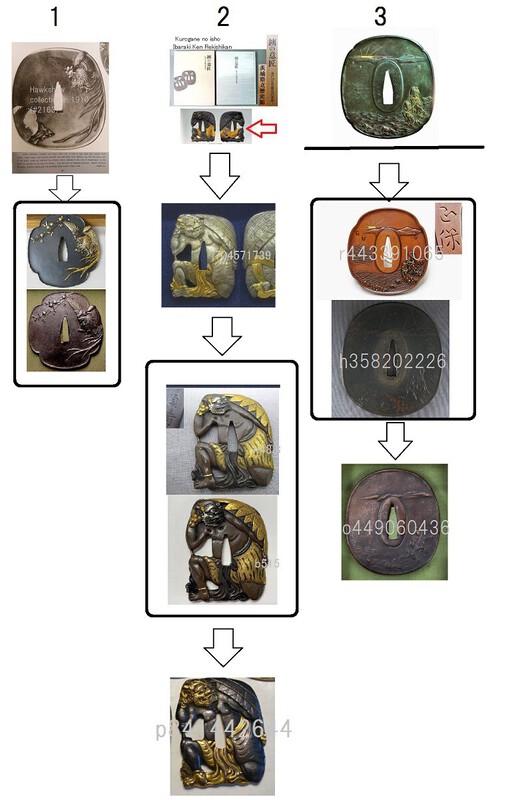



.thumb.jpg.bc10b59027a00aa142dce0349f3ba9e0.jpg)
